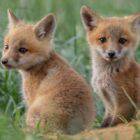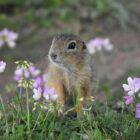Why Bowerbirds decorates their homes?

Bowerbirds, a group of avian species found in Australia and New Guinea, are renowned for their remarkable “bower decoration” behaviour involving the creation of intricate and artistically adorned structures known as bowers.
These fascinating birds meticulously decorate their bowers with an assortment of colorful and curated items, showcasing an impressive array of design and aesthetic sophistication. The behavior of bower decoration has long intrigued scientists and enthusiasts, prompting extensive research and theories to unravel the purpose behind this distinctive avian behavior.
Significance of Bower Decoration in Bowerbirds
1. Sexual Selection and Mating Success
The primary purpose of bower decoration in male bowerbirds is linked to sexual selection. Studies by Borgia (1985) and Prum (1997) emphasized that male bowerbirds construct and adorn bowers to attract females and compete for mating opportunities. The elaborate and carefully arranged displays are considered a form of courtship ritual, serving as a visual and behavioral signal to females regarding the male’s quality, creativity, and fitness. Bowers are a reflection of the male’s ability to acquire and arrange various objects, implying resourcefulness and prowess, critical factors in female mate choice.
2. Individual Recognition and Display
Further research by Endler (1983) and Patricelli and Hebets (2016) suggests that the unique construction and ornamentation of bowers serve as a way for male bowerbirds to showcase individuality and personality. Each bowerbird species exhibits distinct preferences for specific colors, shapes, and objects, enabling females to distinguish between various males based on their bower designs. This not only aids in mate selection but also allows females to remember individual males, fostering repeated visits and potential mating opportunities.
3. Symbol of Cognitive Abilities
Bower construction and decoration also indicate the cognitive abilities and intelligence of male bowerbirds. Avian cognition studies by Madden (2001) and Shaw and Clayton (2014) highlight that the intricate designs and attention to detail exhibited in bower construction require considerable spatial awareness, memory, and problem-solving skills. Thus, the quality and complexity of the bower represent a male’s cognitive prowess, further influencing female mate choice.
Environmental and Social Influences on Bower Decoration
1. Habitat and Resource Availability
Environmental factors play a crucial role in bower decoration. Research by Borgia (1985) and Madden (2001) indicates that the availability of resources within the habitat influences the design and structure of the bower. Male bowerbirds collect a diverse range of materials, such as colorful fruits, flowers, feathers, and human-made objects like bottle caps or ribbons, depending on what is locally accessible. The abundance and variety of resources often dictate the aesthetics of the bower.
2. Social Learning and Cultural Transmission
Furthermore, social learning and cultural transmission contribute to the diversity in bower designs within and among bowerbird species. Research by Laland (2004) and Endler (1983) suggests that young male bowerbirds learn bower construction and decoration techniques by observing and imitating the displays of older, more experienced males. This social learning process fosters the perpetuation of particular styles and preferences within the bowerbird population.
The intricate and elaborate decoration of bowers by male bowerbirds is primarily a courtship behavior aimed at attracting females and ensuring mating success. These structures not only reflect the male’s genetic quality and resourcefulness but also demonstrate their cognitive abilities.
Environmental factors, individual preferences, and social learning further influence the diversity and aesthetics of these unique avian constructions. Studying bowerbird behavior provides insights into the intricate interplay between evolutionary pressures, cognitive abilities, and environmental influences, offering a captivating glimpse into the world of avian courtship rituals.
References:
- Borgia, G. (1985). Bower quality, number of decorations and mating success of male satin bowerbirds (Ptilonorhynchus violaceus): an experimental analysis. Animal Behaviour, 33(1), 266-271.
- Endler, J. A. (1983). Natural and sexual selection on color patterns in poeciliid fishes. Environmental Biology of Fishes, 9(1-2), 173-190.
- Laland, K. N. (2004). Social learning strategies. Learning and behavior, 32(1), 4-14.
- Madden, J. R. (2001). Bowerbirds: insights into avian intelligence. Trends in ecology & evolution, 16(2), 53-55.
- Patricelli, G. L., & Hebets, E. A. (2016). New challenges in the study of animal signalling. Proceedings of the Royal Society B, 283(1821), 20160534.
- Prum, R. O. (1997). Phylogenetic tests of alternative intersexual selection mechanisms: trait macroevolution in a polygynous clade (Aves: Pipridae). The American Naturalist, 149(4), 668-692.
- Shaw, R. C., & Clayton, N. S. (2014). The role of judgment in planning for the future. Animal cognition, 17(1), 19-30.










